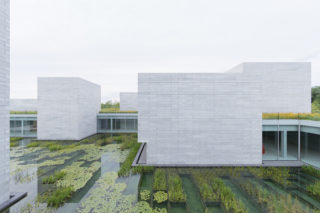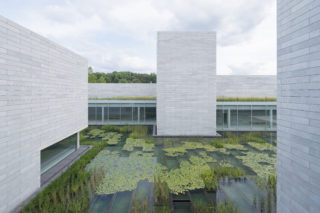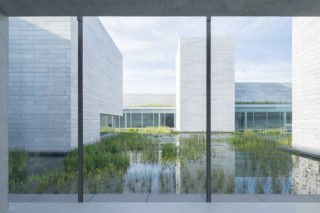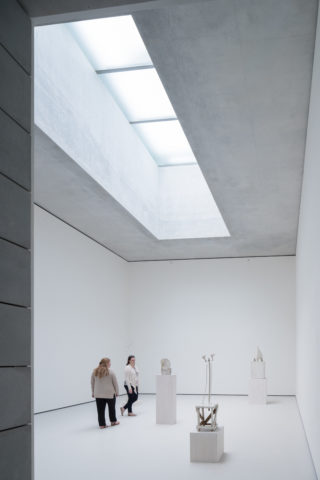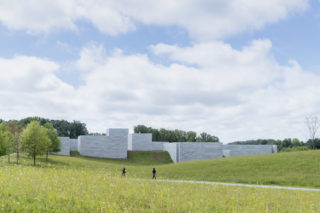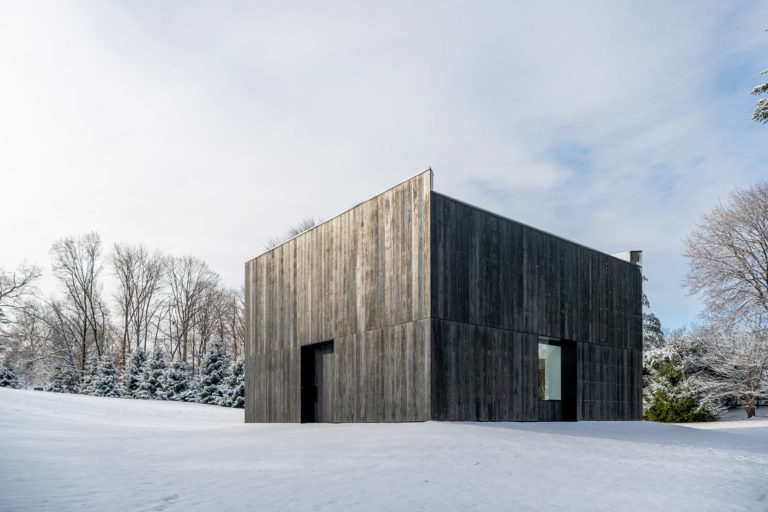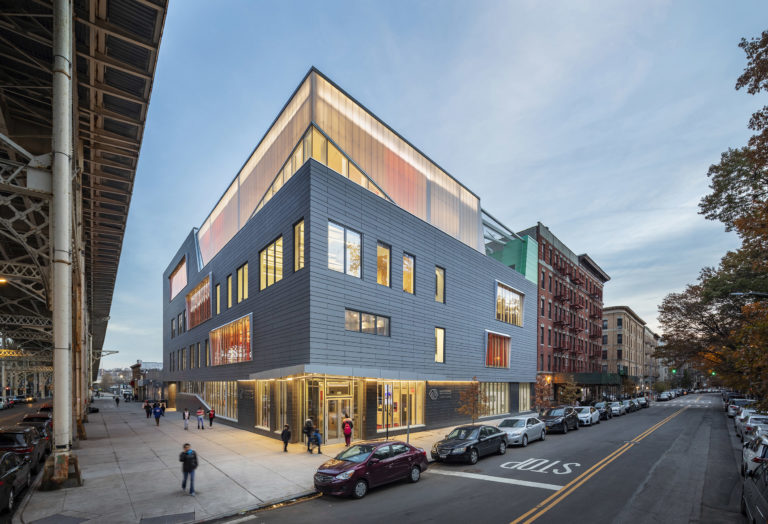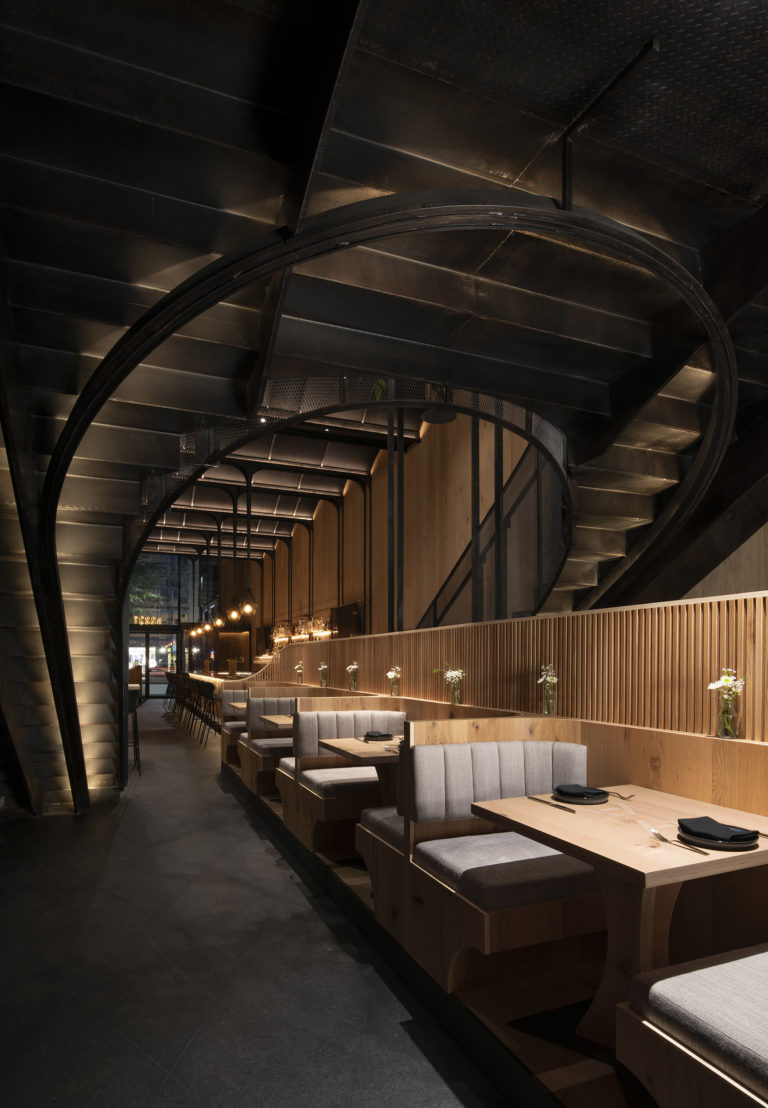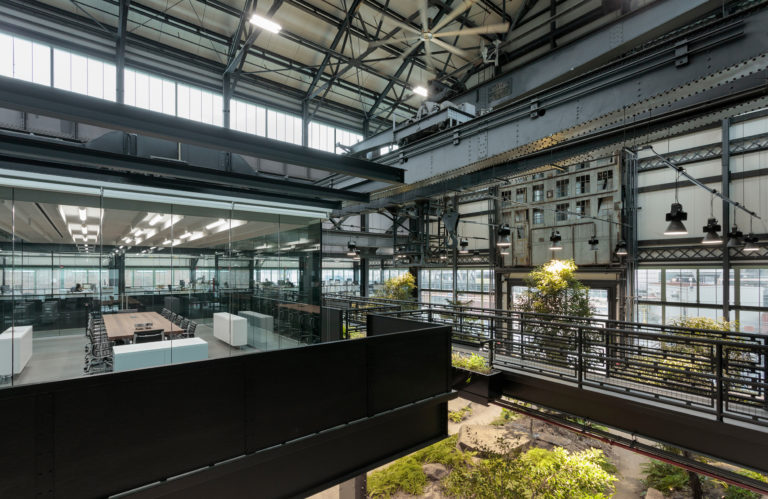Visitors leave their cars in parking groves and are greeted at the Arrival Hall, where they are introduced to Glenstone and oriented for their visit. Their short walk to the museum on accessible paths proceeds over a timber bridge and into an expansive meadow, where one of the outdoor sculptures is visible in the distance. As the path curves, visitors glimpse the new building through a wooded verge of honey locusts, oaks and tulip trees, until they emerge with a full view of the museum entrance. From the entrance, visitors take steps or an elevator down to the lower level where the galleries surround an open water court richly planted with water lilies, irises and rushes, creating a dynamic landscape that changes throughout the seasons Natural lighting is fundamental to the design of the museum. Most rooms have large clerestories or laylights that provide balanced natural light from above. One outdoor sculpture gallery is open to the sky. The play of light and shadow varies throughout the day; and as the seasons change, the light fluctuates, revealing subtle qualities in the artworks providing a more natural, nuanced experience. The new landscape design integrates walking paths, bridges and restored meadows and woodlands. More than 6,000 trees of 55 native species have been planted across the grounds, bringing the total installed at Glenstone to 8,000. Approximately 33 acres of existing pastureland have been developed into sustainable meadows with a range of indigenous flora.
Project facts
Location Potomac, MD
Architect Thomas Phifer and Partners
Landscape Architect PWP Landscape Architecture
Year 2018
Project Team Stantec; VIKA; Schnabel Engineering; Altieri Sebor Wieber; Skidmore, Owings & Merrill; Hector Columbani Associates; R.A. Heintges
Category Cultural
AIANY Recognition
2020 AIANY Design Awards








